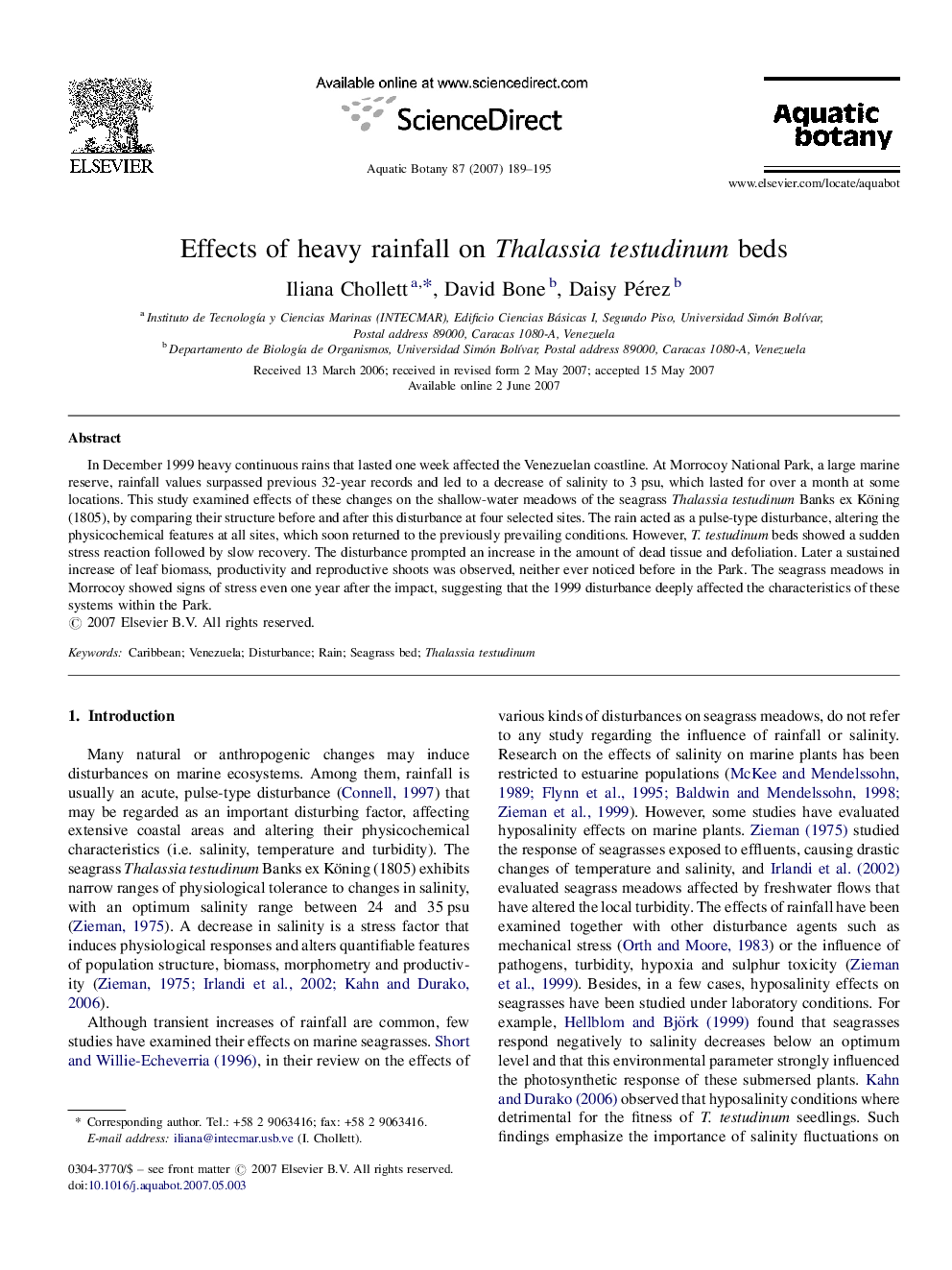| Article ID | Journal | Published Year | Pages | File Type |
|---|---|---|---|---|
| 4528718 | Aquatic Botany | 2007 | 7 Pages |
In December 1999 heavy continuous rains that lasted one week affected the Venezuelan coastline. At Morrocoy National Park, a large marine reserve, rainfall values surpassed previous 32-year records and led to a decrease of salinity to 3 psu, which lasted for over a month at some locations. This study examined effects of these changes on the shallow-water meadows of the seagrass Thalassia testudinum Banks ex Köning (1805), by comparing their structure before and after this disturbance at four selected sites. The rain acted as a pulse-type disturbance, altering the physicochemical features at all sites, which soon returned to the previously prevailing conditions. However, T. testudinum beds showed a sudden stress reaction followed by slow recovery. The disturbance prompted an increase in the amount of dead tissue and defoliation. Later a sustained increase of leaf biomass, productivity and reproductive shoots was observed, neither ever noticed before in the Park. The seagrass meadows in Morrocoy showed signs of stress even one year after the impact, suggesting that the 1999 disturbance deeply affected the characteristics of these systems within the Park.
